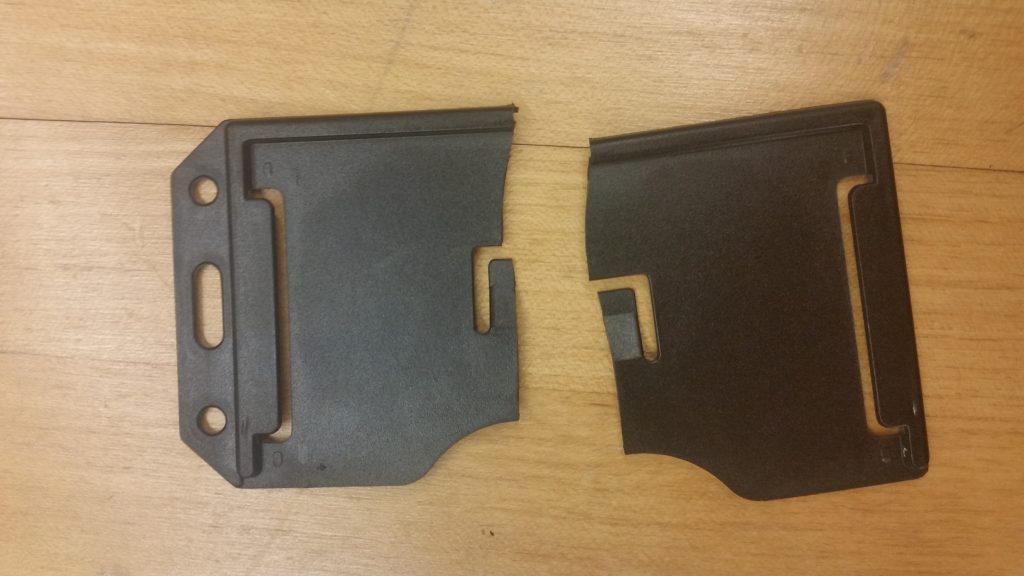About a year ago, I began reading The Four-Hour Work Week by Timothy Ferris. In the book, Tim lays out a road-map for creating a muse (an online side-hustle with the goal of creating financial independence through mostly passive income). Although I ended up ignoring a lot of Tim’s advice, my learning-through-experience approach was much more effective than trusting another business guru’s two-cents.
Inspired, I decided to get my feet wet with a $200 investment while living out of my truck. I am always willing to bet $200-$300 on a promising venture. In 2014, I spent $250 on a top-of-the-line bitcoin miner which I operated for 3 years using my dorm room electricity! That miner net me 1.6 BTC!
The first challenge was deciding what to sell. I wanted to sell a product that would bring actual lasting value to someone’s life – not fidget spinners, or decorative iPhone cases.

I looked at the things I owned that brought me value. I settled on an ID badge holder. While most people use these things to hold company IDs, I had used mine to completely replace my wallet. It simplified my life significantly, allowing me to carry the essentials (keys, credit card & driver’s license) all accessible from my belt.
I instantly logged in to Alibaba and began searching for the parts I needed. This brings me to my first lesson.
Begin Product Search Domestically
Don’t assume Alibaba is the cheapest option. Shipping from China is very expensive! Begin your search locally. You may be surprised to find a domestic supplier with FREE SHIPPING! Additionally, domestic products are more likely to be made of higher quality which leads me to the second lesson:
Always Order Product Samples
Order samples – especially when dealing with Alibaba! Ordering a product sample may seem like a waste of time. It can take 30+ days for a shipment to arrive from China and the per-unit cost of a sample may be VERY high compared to the per-unit cost of a regular order. It may seem worth the risk to just go ahead and place an order – it’s NOT!

It has been my experience that the sales representatives on Alibaba have poor English skills and will tell you anything to make you place an order. I’ve had reps straight up lie about product specifications (like the kind of plastic used in badge holders). Skipping the product sample can leave you with 100 ct. badge holders that you spent $75 on and which are as brittle as Wheat Thins.
eBay or Shopify?
You have two options as to how to sell your products: platform or proprietary.
Platforms (eBay, Amazon, Etsy) are great because they come with huge audiences but high competition. This allows you to reach many customers but it leaves PRICE as your only competing factor.
Proprietary stores (Shopify, WooCommerce, etc.) are great because you own the marketplace and can compete with other factors (quality, customer service, etc.) However, you will have to grow your own audience.
I started with a WooCommerce site but I soon realized it would be difficult to grow an audience for just badge holders. I listed my product on eBay.

Price Based on Competition
If your listing on a platform, the price you charge is purely based on the competition’s price. I tried to circumvent this fact by using better photos and optimizing the title and description. I ended up slowly lowering my price until it matched or beat the competition. Only then did I begin making regular sales.
Research competition BEFORE you buy. This seems obvious but I missed it. Lowering my prices really ate into the profit margins and made this venture barely profitable.
Optimize Title
Use a tool like Title Builder to create optimized eBay titles. Your competitors are using it. So you have to! These tools pack your title with relevant search keywords and increase your product’s ranking in search results.
Always Make a Counteroffer
If you choose to include the “Make Offer” option in your listing, always make a counteroffer. This is Negotiating 101 and it actually benefits both you and the buyer.
Consider this: if you accept the first offer, the buyer is thinking, “Wow, I should have made a lower offer.” However, if you counter, the buyer knows he got the best price he could (and you made out with more).
Encourage Product Reviews

There is another competing factor on platforms: reviews. A listing with more positive reviews will outperform similar listings with worse reviews. Many positive reviews may also warrant a price increase. Reviews take lots of time to build organically. Include a note to remind buyers to review your product.
Don’t Bother with <$10 Unit Profits
The market for products with less than $10 unit profits is a dog eat dog world. There are rampant review fraud and vendors who can afford to buy in bulk to increase margins. Leave these kinds of products to the noobs and big dogs.
As an individual, move to specialty products with low competition.
Reinvest Profits
Nothing is more tempting to spend profits on new stuff. This is especially true with eBay since sales money is automatically deposited into PayPal where it’s easy to spend again on eBay. Try to separate your profits and reinvest them in the hustle until you can scale to a critical mass.
Stop Contributing to “The Stuff“

Lastly, consider your ethical and environmental responsibility. Do you want to sell another thing that may end up in the ocean or landfill? Do you want to sell a thing that encourages a bad habit or has negative consequences to the person who uses it?
I expect my next eCommerce venture to be much more lucrative. I’ll be sure to report back once I have results!
Have you had success in eCommerce? I’d love to hear about it. Let me know in the comments!

Leave a Reply